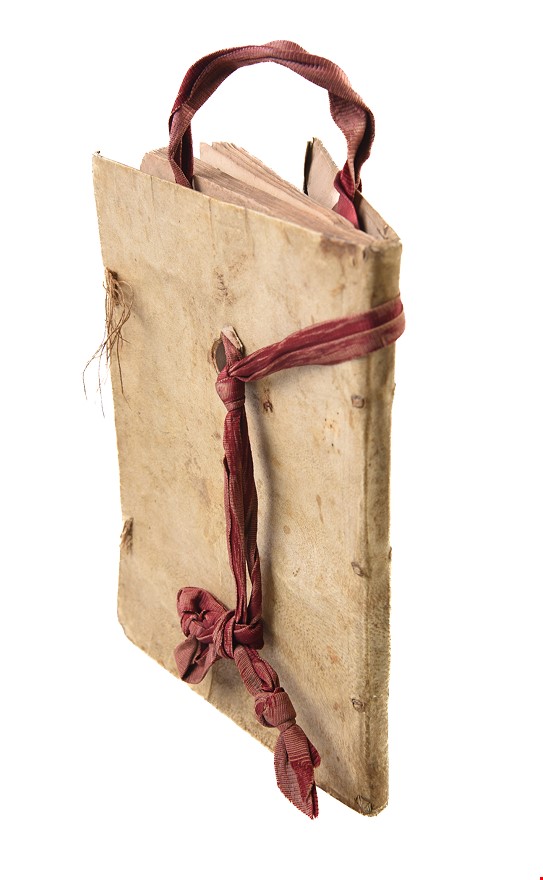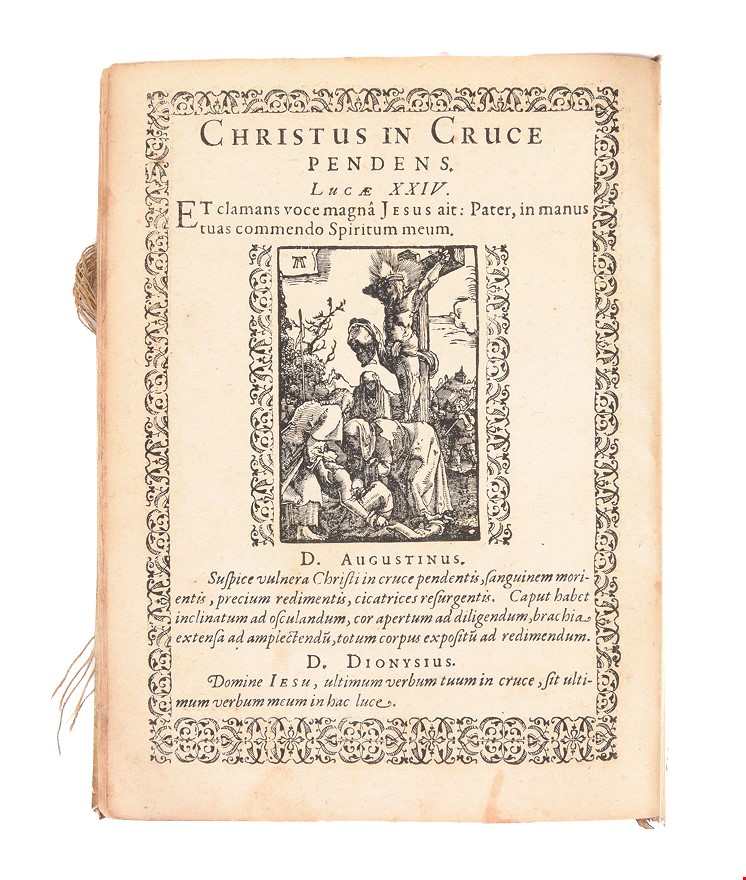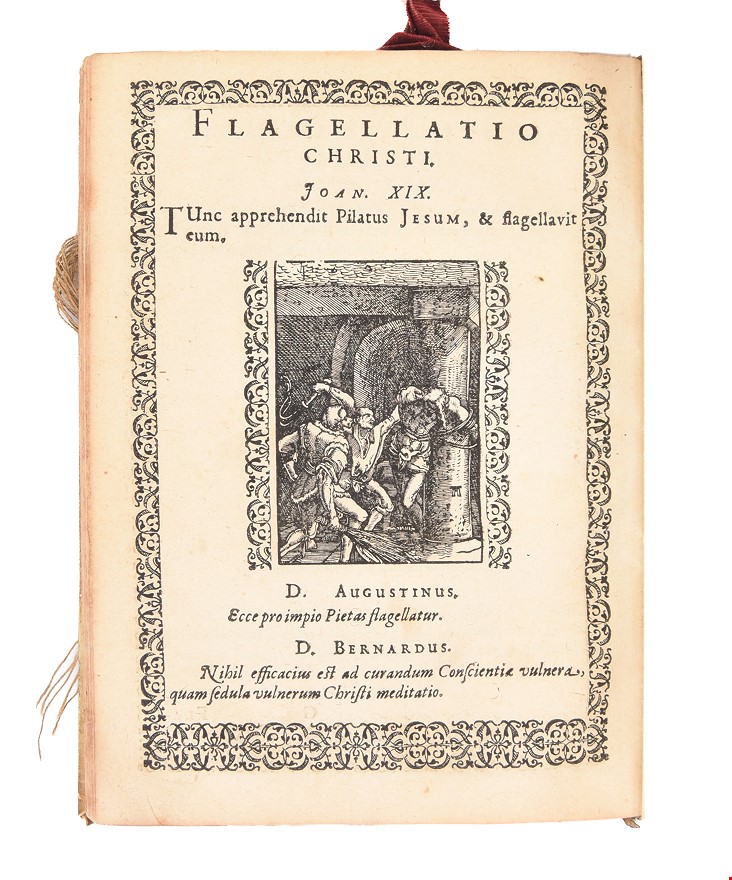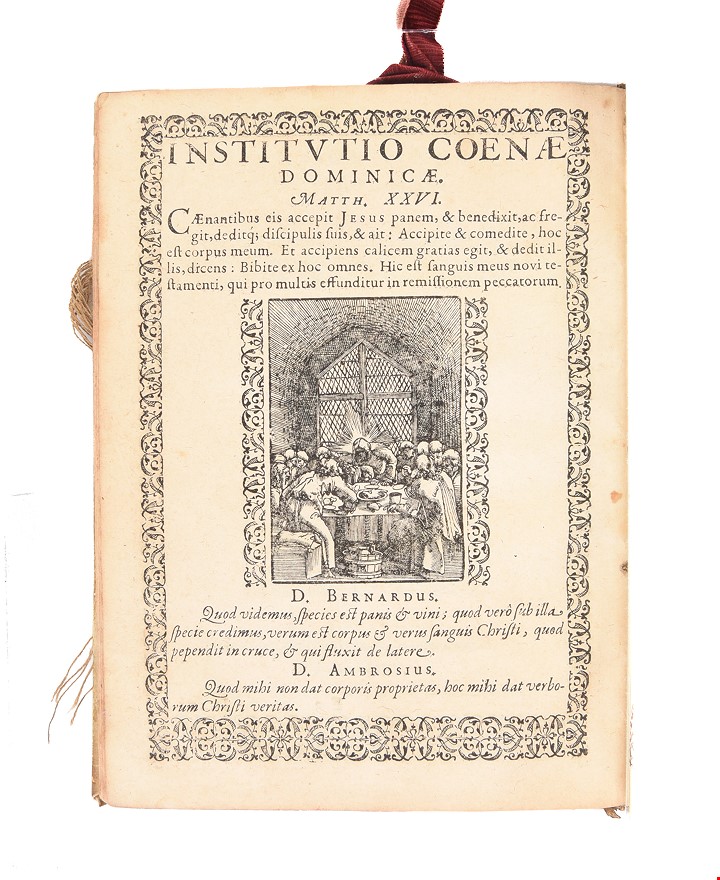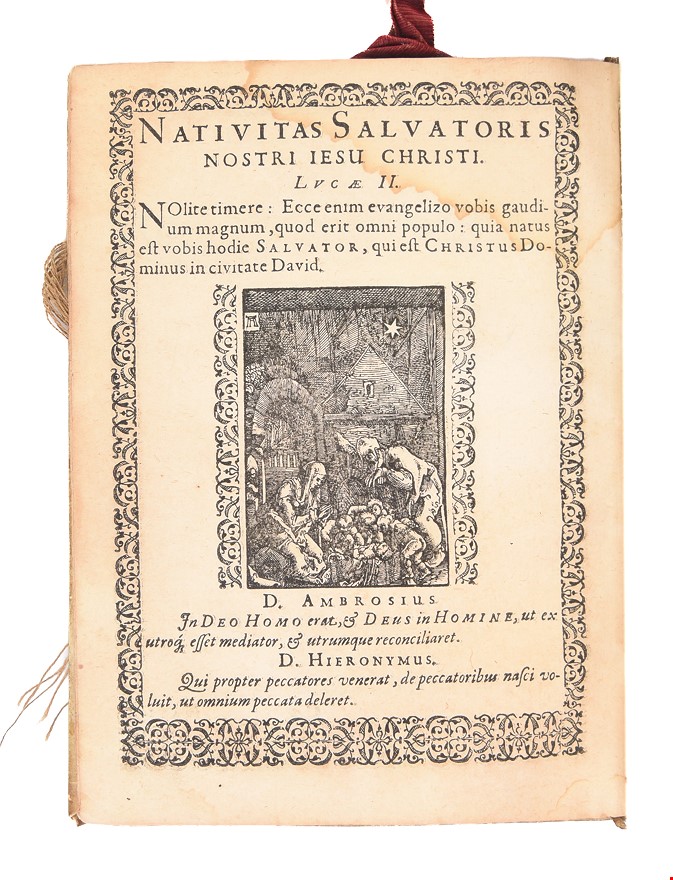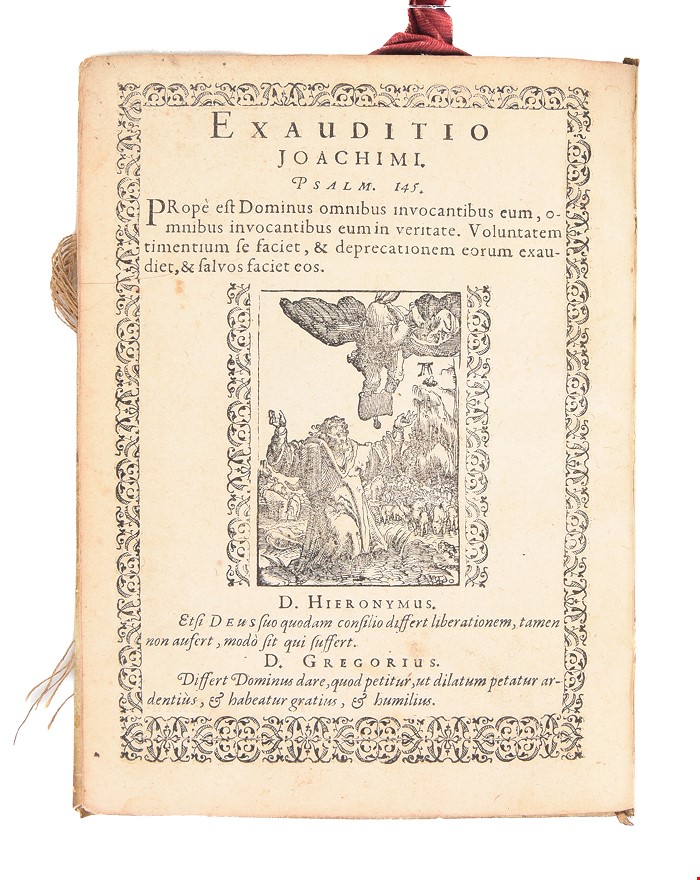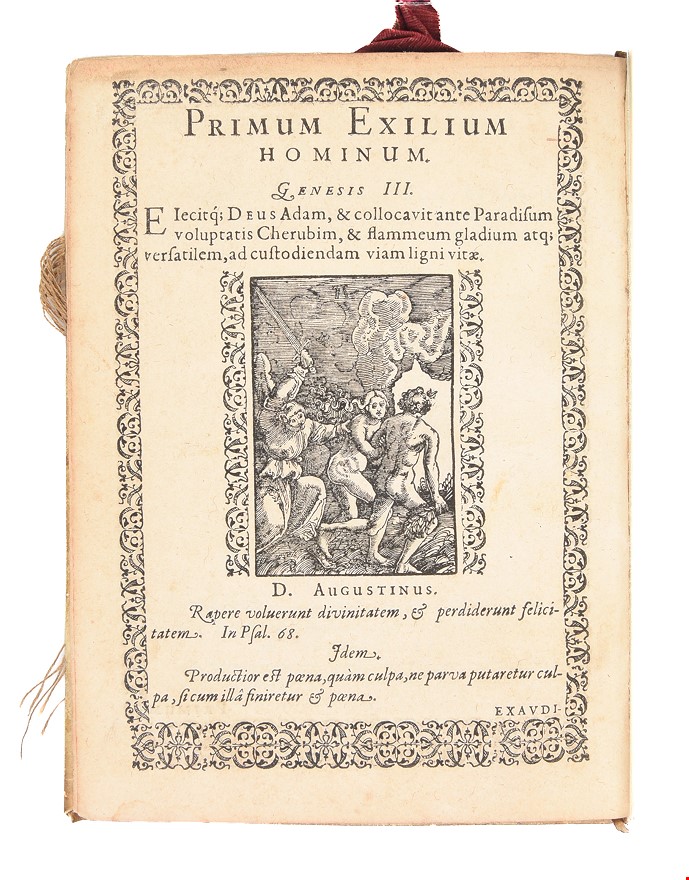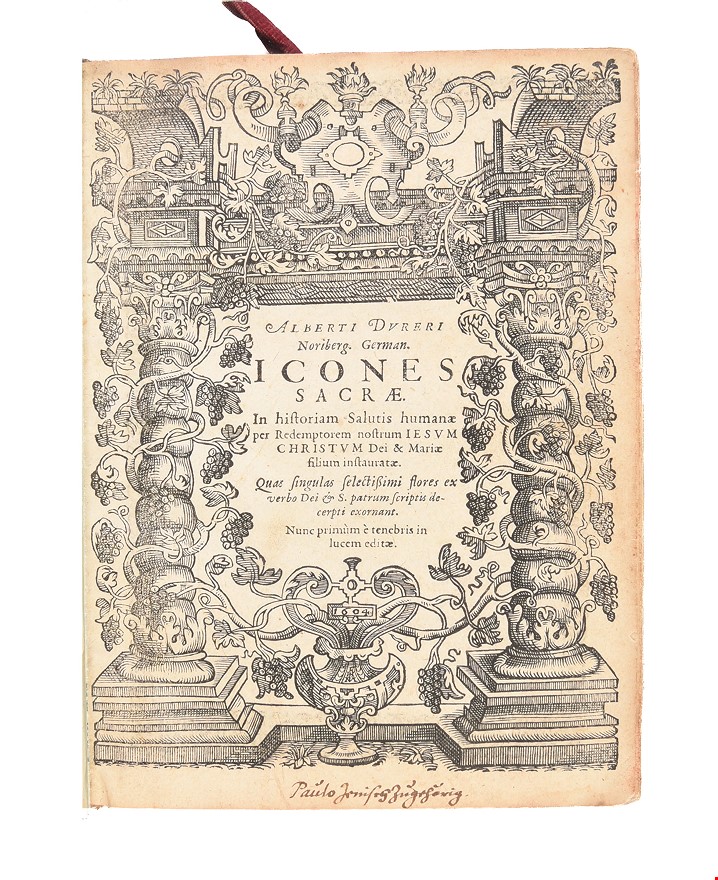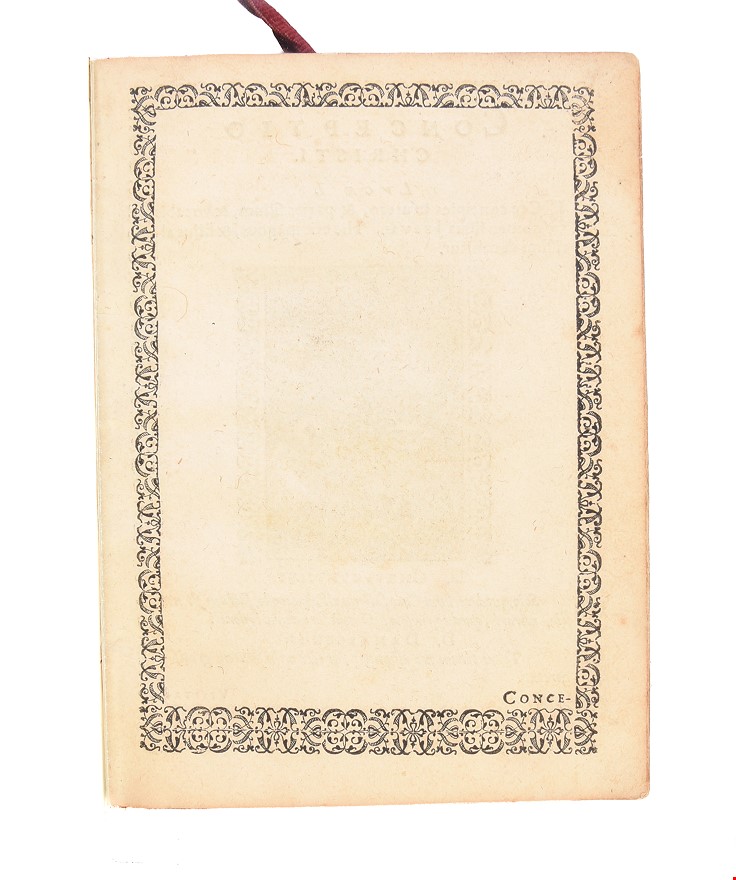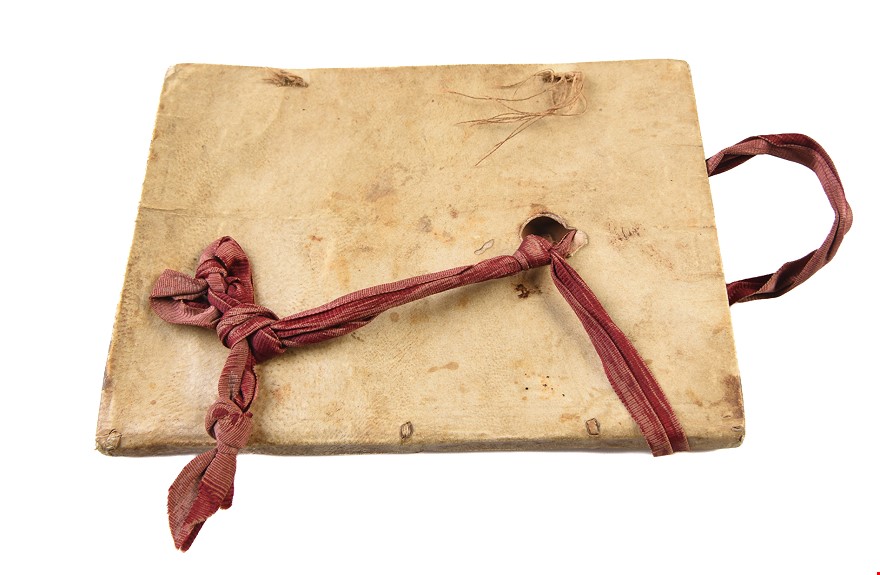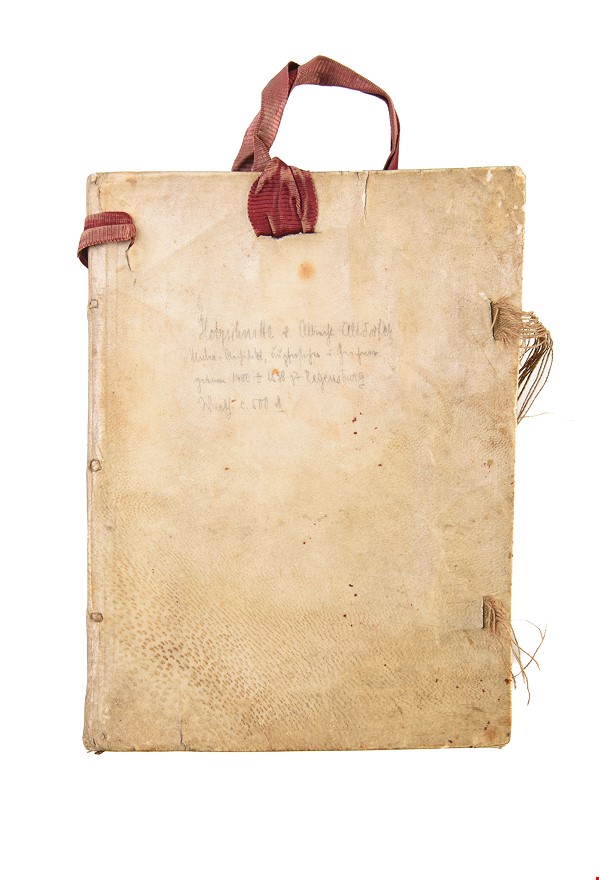Alberti Durer Noriberg. German. Icones sacrae. In historiam salutis humanae per redemptorem nostrum Iesum Christum Dei & Marium filium instauratae... nunc primum è tenebris in lucem editae... [Hamburg, G.L. Frobenius], 1604
ALTDORFER Albrecht (1604)
£10000.00
Please contact us in advance if you would like to view this book at our Curzon Street shop.
ALBRECHT ALTDORFER'S WOODCUTS DISGUISED AS DÜRER'S WORK
Title within broad architectural border, with pillars entwined with grape laden vines which spring from a vase, dated 1604, and below the letters F.H.M, 38 woodcuts (72 x 48mm) by Albrecht Altdorfer with his monogram 'AA' printed on the versos only, typographical border round each page, rectos all blank save for border.
4to (187 x 142mm). Contemporary limp vellum, remains of silk ties at fore-edge, old red silk looped between opening at head of front cover and hole in rear cover, tied in a knot, with the excess fashioning a loop (possibly to be tied from a belt?), pencil note on upper cover.
First and only edition of Albrecht Altdorfer's remarkable woodcuts in book form, presented by the publisher as the work of Dürer. A rare survival, OCLC only records six copies in US libraries.
Although posthumous, this is the only example of his work in a printed book, as Campbell Dodgson records, “So far as we know, Altdorfer, unlike most of the contemporary painters, never himself illustrated books”.
Fairfax Murray described how the present edition came to be, in the preface "the publisher says that he acquired the present blocks 'Icones sacrae Alberti Dürer' [i.e. Altdorfer], 78 years after the death of the artist" and mistook Altdorfer's monogram for Dürer's. The woodcuts which follow are 38 (omitting Bartsch 38 and 40) of the 40 cuts from Altdorfer's suite the Fall and Redemption of Mankind, arranged partly in the wrong order. They are printed on the verso only with quotations from the Bible, and SS. Augustine, Bernard, Jerome, Gregory, Lactantius and others; the rectos are all blank save for the typographical border presumably for the reader to add devotional passages of their own. New Hollstein adds that "the woodblocks were repaired for this edition probably by the woodcutter Jacob Lucius von Cronstadt; his (clover-leaf) mark added in W.26 (Pilate washing his hands)".
Albrecht Altdorfer's series of woodcuts, "illustrate the Fall and Redemption of Mankind, beginning with the temptation of Eve and the expulsion of Adam and Eve from Paradise, through the life and Passion of Christ and the death of the Virgin to the Last Judgement. By 1513, Altdorfer had already executed a number of small, finely detailed engravings, and here he transfers similarly minute designs to the woodcutter's block. Owing to the fact that the designs had to be cut in relief by a block-cutter, it was much more difficult to achieve the same degree of precision in woodcuts as in engravings; but despite this difficulty, Altdorfer's series is a technical tour de force... Altdorfer was probably stimulated to produce his innovative series as a challenge in response to Dürer's series of woodcuts of the Life of the Virgin, the Large Passion and the Small Passion which were all issued as books in 1511. Dürer's Small Passion contained thirty-seven woodcuts and comes closest to Altdorfer's series in the range of subjects. But Altdorfer's blocks are almost a quarter of the size of Dürer's and his distinct and idiosyncratic narrative style does not at all depend on that of his famous contemporary. His subjects are not displayed outwardly to the viewer, as in Dürer's work, but are contained internally within the figures of the composition; facial expressions are often shrouded or unclear, and landscape and architectural backgrounds play an important part in conveying atmosphere. The way in which the subjects are depicted seems to complement the detailed technique and has the effect of drawing the viewer towards a closer examination of them."(Bartrum)
The painter, architect and printmaker Albrecht Altdorfer (c. 1480-1538) "was one of Germany's most innovative artists in an era spanning late medieval piety, the Renaissance and the Reformation, and his work reveals many facets of a changing society... a central figure of the Danube School." Grove Art I, pp. 714-721.
Provenance: Neat early inscription at the foot of the title "Paulo Francis Zug...wig".
Old burnhole in the rear cover (through which the ribbon runs), the last six leaves with a small nominally toned area as a result of that burn, some old dampstaining in the upper gutter in signatures C and D, touching the borders and a little of the text, but generally a good clean copy.
VD17 1:065816U. Bartsch, 1-40. New Hollstein, W1-40. Brunet II, 911. Fairfax Murray German, 30. Dodgson II, p. 222. Bartrum, German Renaissance Prints 1490-1550, no.192, pp. 187-9. Hoe, Emblems, p. 52.
OCLC US: Harvard, Huntington, Morgan, Trinity College CT, UCLA, U. of Carolina (Chapel Hill), NGA Washington.
Stock Code: 246600
